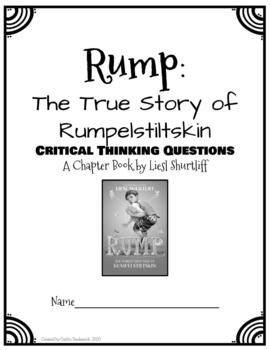Rump: The True Story of Rumpelstiltskin Thinking Questions & Writing Extension
- Zip
Description
Contents:
-Student pdf packet of Critical Thinking Questions for the entire book Rump that can be printed or sent to students digitally
-Student directions for Choose Your Own Adventure Fractured Fairy Tale Writing Extension with graphic organizer
-Teacher pdf packet that contains above resources combined
This is a critical thinking reading packet I created to use with my students while we read the book Rump: The True Story of Rumpelstiltskin by Liesl Shurtliff. It includes critical thinking questions to go along with each chapter and an after reading writing extension activity that is a Choose Your Own Adventure Fractured Fairy Tale in Google Slides. The link to make a copy of the Google Slides presentation is included with the slides already prepared with buttons so that it is super easy for students to create their own Choose Your Own Adventure story. A graphic organizer to help students organize their writing is also included with the extension activity.
When creating the critical thinking questions, at the beginning of the book I focused on students noticing signposts as they were reading and also on critical thinking questions related to the text. In the later chapters, I mainly focused on critical thinking questions with a reminder of a few of the signposts at the end. (If you're not sure what a signpost is, each is explained well in the student packet! See the preview for an example.) I created my questions using the higher levels of Bloom's Taxonomy so my students had to evaluate, create, and analyze often. See the preview to check it out!
This is a perfect packet to use for a guided reading group, a whole class reading, or even an individual student. My students and I had a lot of great conversations based on these questions and they loved presenting their fractured fairy tales at the end. I hope your students do too!





